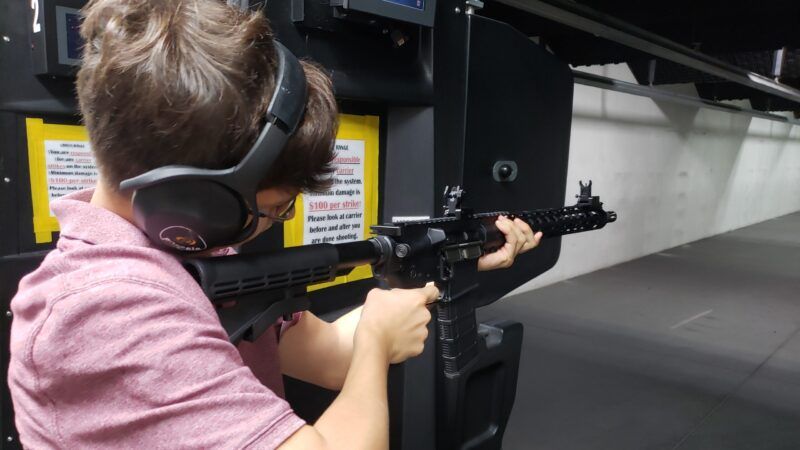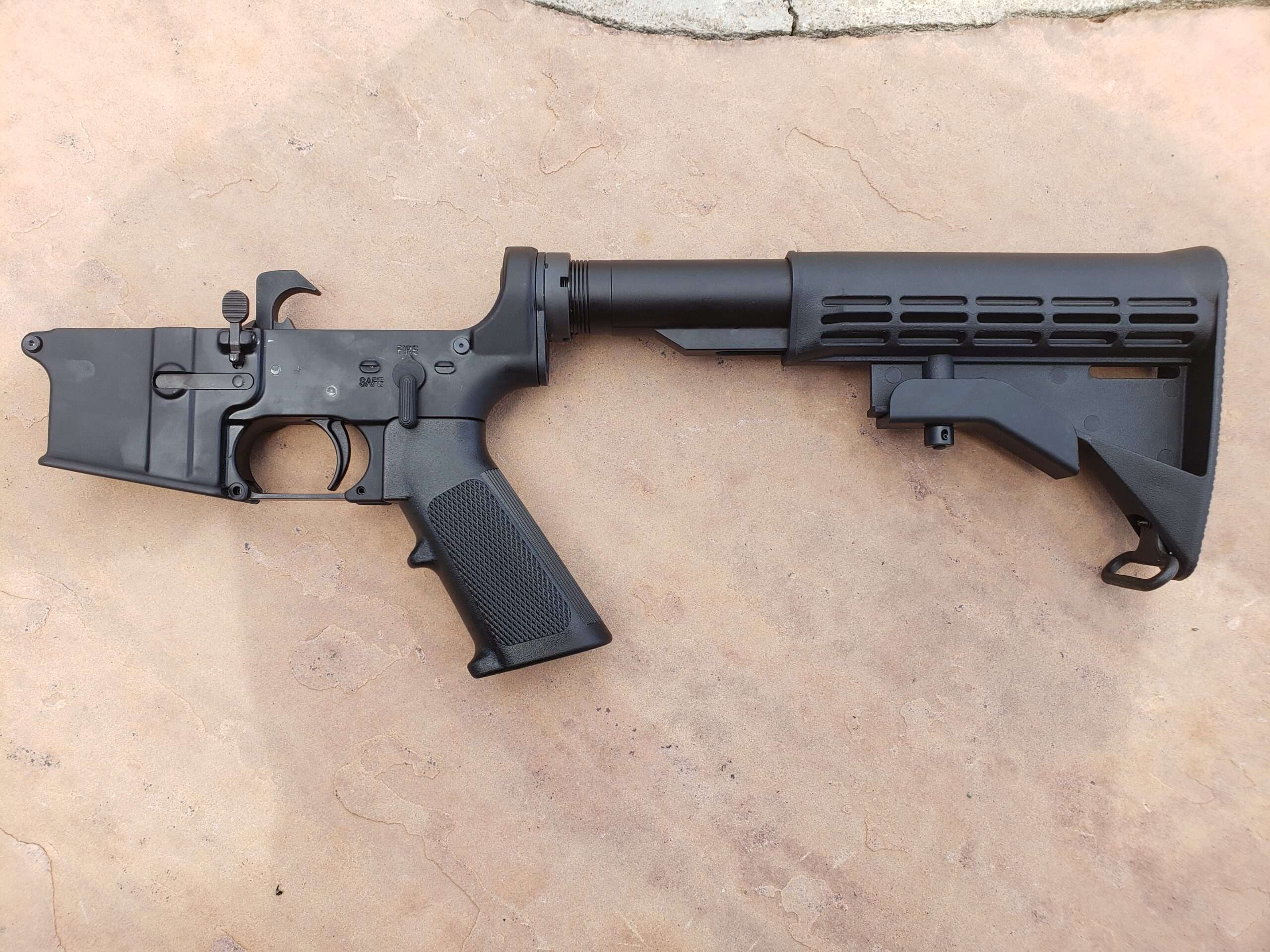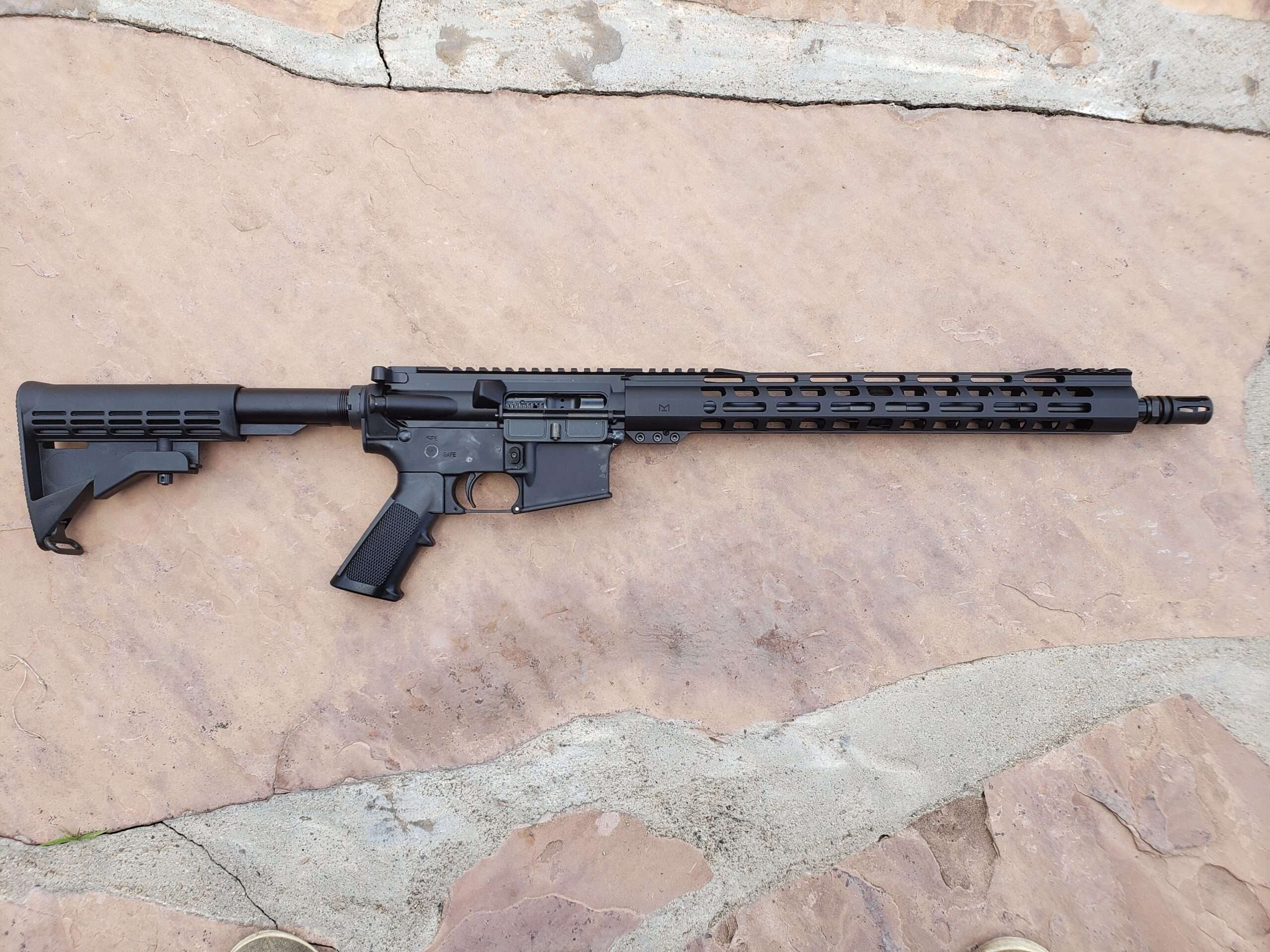Building Your Own Rifle Is the Perfect Family Project
Improve your skills! Bond with the kids! Infuriate control freaks!

I remember one of my mother's uncles, at a picnic, responding to a comment about a proposed gun ban with a laconic "Doesn't matter. We'll build our own." Building rifles was his hobby, I learned during that day of grilling and shooting on his land in long-ago rural New Jersey. His comment has come back to me over the years, especially after, for Christmas, my wife gifted my son and I a jig for completing an unfinished AR-15 lower receiver. Like my great uncle, we built our own. We recommend the experience.
Making personal firearms is perfectly legal under federal law, if that matters to you, though states and localities may have their own rules. To that end, finishing "80 percent" receivers has become a popular pastime since the roughed-out blocks, shaped like the part of the AR-15 rifle that contains the hammer, safety, and trigger, but with solid material where those parts should fit, can be purchased without the legal rigmarole required for buying a firearm (the privacy offered by a DIY gun is somewhat compromised if you then write an article about your activities). It's a modern version of my uncle's hobby, simplified by the use of jigs that guide drill bits and end mills for finishing the project.

My wife gave us the Easy Jig sold by 80% Arms, which is one of a number of competing products in that category. I've only ever done this once, so I can't tell you which jig is best, but the Easy Jig got the job done, and came with clear and concise instructions that made our obsessive viewing of the online instructional video probably a bit superfluous.
AR-15 receivers can be manufactured from several different materials, including polymer and various types of aluminum. I picked up an unfinished receiver made from 7075 aluminum. Like everything gun-related, demand for these receivers has skyrocketed and the price is now roughly double what I paid.
The biggest challenge was drilling the initial pilot hole needed to start milling the pocket for the fire control group (basically, the hammer and trigger). Despite plenty of oil, my cheap drill press kept binding. That necessitated using a (much better) corded hand drill to back out the bit, which came in a package of tools also purchased from 80% Arms, before resuming. Eventually, the bit won the battle.
I hadn't milled anything since high school, back when schools offered shop class, and this was entirely new for my son. But attaching the end mill from the tool kit to a router and milling out the pocket was much easier than anticipated. The key was lots of patience as we took turns removing layers of aluminum. Molded into the jig are gauges for incrementally extending the end mill, but our router did unlock itself a couple of times, cutting deeper than intended. Fortunately, that never happened at a point when it mattered. We learned to anticipate such slips by feel so we could tighten the router.
Next, we drilled the holes for the hammer, safety, and trigger, using bits included in the tool kit. The included bubble level helped orient the receiver horizontally relative to the drill press.

Because I focused on finishing a lower receiver, for the rest of the build I purchased a parts kit from Palmetto State Armory. Serious hobbyists will, instead, customize their rifles with parts chosen from many sources. For guidance in putting the parts where they belong, we turned to The AR-15 Complete Assembly Guide by Walt Kuleck and Clint McKee, as well as the online Ultimate Visual Guide from Pew Pew Tactical. The book walks you through the process step-by step, while the Ultimate Visual Guide is well-illustrated and suggests workarounds if you don't have a full array of specialized tools. We acquired an inexpensive gunsmithing punch set that proved indispensable once we threadlocked the hammer head into place so it didn't twirl with every blow.
We encountered a hitch when the safety wouldn't slip into place. When I probed with the drill bit to diagnose the problem, I discovered that the holes on each side of the frame were just a hair out of alignment. A slow turn of the bit in the drill removed a whisker of aluminum, and in the safety went.
Also, I learned years ago that anything involving fiddly bits should be assembled or disassembled in a box. Nevertheless, the bolt-catch spring and plunger launched themselves over my shoulder and bounced off the wall. The two of us retrieved them after several minutes on our knees with flashlights.
"It's simpler inside than I expected," Anthony told me as he installed parts. He got a kick out of figuring out how they interact and make the firearm function.
"It won't make you an AR-15 armorer, but it will make you a more knowledgeable owner," Kuleck and McKee note of the benefits of building a rifle. "In short, if you build it, you'll know how to repair it."
This perspective evokes my childhood hobby of disassembling doorknobs, radios, and household appliances to see how they function and then putting them back together in (usually) working order. Too many of the things in our life might as well be magic given our limited understanding of how they work. We can't demystify everything, but examining a few things important to us enriches our knowledge while giving us more control over our lives.
With the finished lower pinned to the Palmetto State Armory upper kit, everything was assembled. But would our new "boomstick" go BANG? To answer that question, we went to the local range, since the road to my preferred desert shooting spot washed out in a recent monsoon storm. But indoor ranges don't play well with the steel-core ammunition that makes up the bulk of our supply. Fortunately, I was able to scrounge together a couple of magazines worth of range-friendly 5.56 ammo. Anthony got first dibs and, to cut to the chase: Yes, our home-build goes BANG!

Unsurprisingly, given the politically polarized nature of gun ownership in this country (although that is changing) the Biden administration sees an opportunity to please supporters and sting opponents by tightening rules that allow for home-constructed firearms free of bureaucratic impediments. Specifically, 80 percent receivers and anything that can "readily be converted" to shoot according to extremely subjective criteria may soon be regulated as firearms.
But even vague rules have limits. The proposed revisions allow that an object must be "clearly identifiable as an unfinished component part of a weapon" to be subject to regulation and that "frame or receiver molds that can accept metal or polymer, unformed blocks of metal, and other articles only in a primordial state would not—without more—be considered a 'partially complete' frame or receiver." It's easy to envision an expanded market for jigs and tools that help hobbyists transform bricks of aluminum and polymer into finished receivers. And let's not forget that my great uncle made rifles long before you could buy 80 percent receivers on the internet.
My son eagerly anticipates the answer he'll offer to the inevitable "what did you do this summer?" questions at school. As for me, I'm more prepared than ever to rebut control freaks' demands for tighter restrictions on everything. "Doesn't matter. We'll build our own."




Show Comments (185)